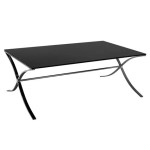An Introduction to Coffee Table Book Publishers
Coffee table books represent a unique niche within the publishing industry. These large-format, visually driven books are designed not just for reading, but also for display. Their primary purpose is to serve as conversation starters, adding an element of sophistication and personality to a living space. Coffee table book publishers specialize in curating, designing, and producing these art objects, often focusing on specific subject matters that cater to diverse interests. The world of coffee table book publishing is characterized by high production values, careful attention to design, and a strategic understanding of the target audience.
Navigating the landscape of coffee table book publishers can be complex for authors seeking to bring their visual projects to life. Understanding the different types of publishers, their specialties, and their submission processes is crucial for maximizing the chances of success. This article aims to provide an overview of coffee table book publishing, exploring its key characteristics, the various types of publishers involved, and the factors that contribute to a successful coffee table book project.
Understanding the Coffee Table Book Market
The coffee table book market is driven by a combination of aesthetics and content. While the visual appeal is paramount, the subject matter must also be compelling and resonate with a target audience. Common themes include art, photography, travel, architecture, design, fashion, history, food, and celebrity culture. Demand is influenced by trends in interior design, popular culture, and overall consumer spending habits. Seasonal factors, such as the holiday season, also play a significant role in sales.
Successful coffee table books often possess several key characteristics. High-quality printing and binding are essential, contributing to the overall tactile and visual experience. Compelling imagery, carefully curated and expertly reproduced, is a cornerstone. The text, while often secondary to the visuals, should be informative, engaging, and well-written, complementing the imagery and providing context. Unique design elements, such as special paper stocks, embossing, or slipcases, can further enhance the book's desirability and value.
The target audience for coffee table books is diverse, ranging from art enthusiasts and design aficionados to casual readers seeking visually stimulating content. Understanding the demographics and interests of the intended audience is crucial for publishers when selecting projects and developing marketing strategies. Some publishers specialize in niche markets, catering to specific interests such as contemporary art, vintage automobiles, or sustainable architecture. Others focus on broader categories with wider appeal.
Distribution channels for coffee table books are also varied. Traditional bookstores remain a primary outlet, particularly for established publishers with strong relationships with retailers. Online retailers, such as Amazon, play a significant role in reaching a broader audience. Specialty stores, museum shops, and design boutiques are also important channels, offering curated selections that align with their specific customer base. Direct-to-consumer sales through the publisher's website can also be a significant source of revenue, allowing for greater control over pricing and marketing.
Types of Coffee Table Book Publishers
The publishing landscape includes a variety of players involved in producing coffee table books. These publishers vary in size, scope, and focus, impacting the types of projects they undertake and the resources they can dedicate to each publication. Recognizing these distinctions is essential for authors seeking the right publishing partner.
Large, established publishing houses often have dedicated imprints or divisions that specialize in coffee table books. These publishers possess significant resources, including established distribution networks, experienced editorial teams, and sophisticated marketing capabilities. They typically focus on projects with broad appeal and significant commercial potential. However, they may be less inclined to take risks on niche or experimental projects.
Independent publishers offer a different approach. These smaller, often privately owned companies, may have a more focused vision and be more willing to consider unconventional projects. They may also offer authors greater creative control and a more collaborative working relationship. However, independent publishers may have limited resources and distribution capabilities, requiring authors to play a more active role in promoting their work.
University presses often publish coffee table books related to their areas of academic expertise. These books may focus on art history, architecture, regional history, or other specialized subjects. While university presses may not have the same commercial ambitions as trade publishers, they offer credibility and access to a niche audience of scholars and enthusiasts.
Hybrid publishers represent a newer model, combining elements of traditional publishing and self-publishing. They offer a range of services, including editing, design, and marketing, but authors typically contribute financially to the publication process. Hybrid publishing can be a viable option for authors who are willing to invest in their projects and retain greater control over the publishing process.
When identifying potential publishers, authors should consider several factors. The publisher's specialization and track record in the relevant subject area are crucial. The quality of their previous publications, both in terms of design and content, should be carefully evaluated. The publisher's distribution network and marketing capabilities also play a significant role in the book's potential success. Finally, the financial terms and contractual agreements should be thoroughly reviewed to ensure they are fair and aligned with the author's goals.
Key Elements of a Successful Coffee Table Book Project
Developing a successful coffee table book project involves careful planning, meticulous execution, and a strategic approach to marketing. The process begins with a compelling concept that resonates with a target audience and offers a unique perspective or visual experience.
High-quality imagery is paramount. Whether the book features photographs, illustrations, or other visual elements, the images must be technically proficient, aesthetically pleasing, and relevant to the subject matter. Professional photography or licensing images from reputable sources is often essential. The images should be carefully curated and organized to create a cohesive visual narrative.
The text, while often secondary to the visuals, plays an important role in providing context and enhancing the reader's understanding. The writing should be clear, concise, and engaging, avoiding jargon and technical terms that may alienate a general audience. The text should complement the images, providing insightful commentary and historical background.
Design is a critical element. The layout, typography, and overall aesthetic should be carefully considered to create a visually appealing and harmonious book. Professional graphic design services are typically essential to ensure the book meets the highest standards of quality. The design should enhance the visual impact of the images and create a cohesive reading experience.
Production quality is also crucial. High-quality printing and binding are essential to ensure the book looks and feels luxurious. The choice of paper stock, binding method, and cover materials can significantly impact the book's overall appeal. Working with reputable printers and binders is essential to achieving the desired results.
Marketing and promotion are essential for reaching the target audience. A well-defined marketing strategy should include a mix of online and offline activities, such as social media campaigns, book signings, media outreach, and partnerships with retailers and influencers. Developing a strong online presence and engaging with the target audience through social media platforms is crucial for building awareness and driving sales.

Oh How To Make A Coffee Table Book And Publish It Design Studio

How To Make A Coffee Table Book 10 Step Guide Blurb Blog

Oh How To Make A Coffee Table Book And Publish It Design Studio

Oh How To Make A Coffee Table Book And Publish It Design Studio

Oh How To Make A Coffee Table Book And Publish It Design Studio

How To Make A Coffee Table Book 10 Step Guide Blurb Blog

The 35 Best Coffee Table Books Of 2024

How To Make A Coffee Table Book 10 Step Guide Blurb Blog

Oh How To Make A Coffee Table Book And Publish It Design Studio

Coffee Table Books About Wine Cocktail Food Assouline
Related Posts








